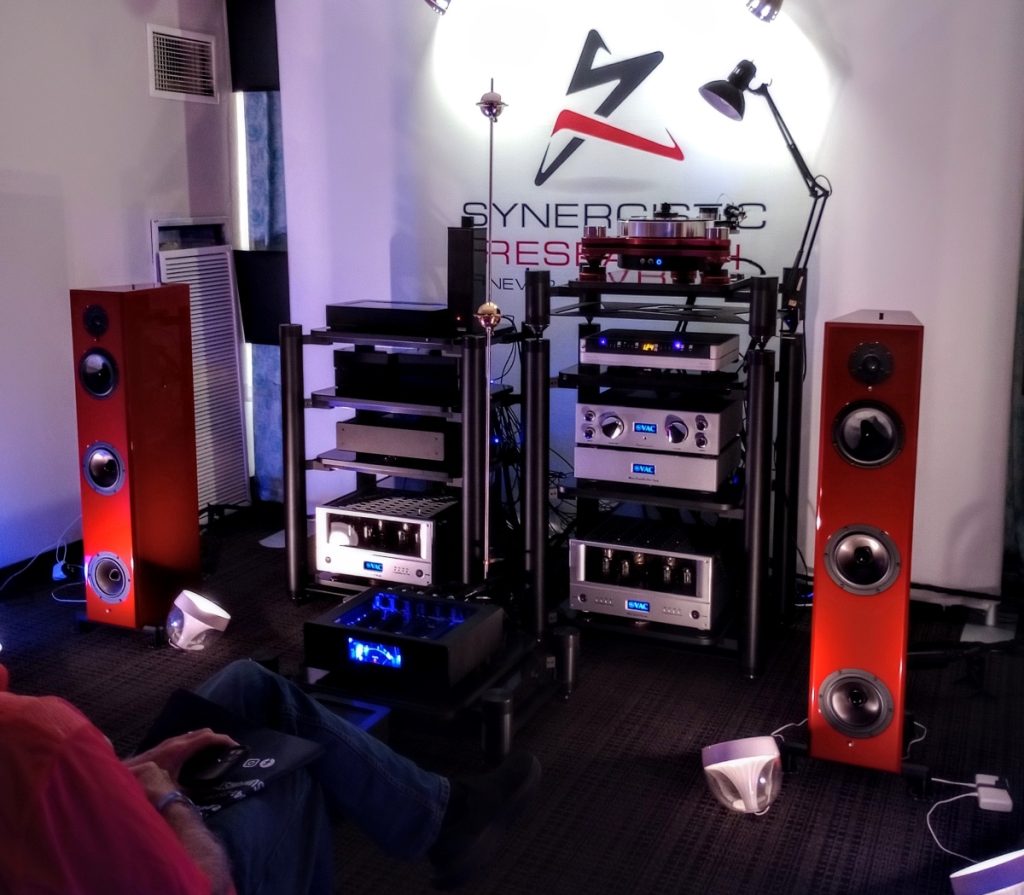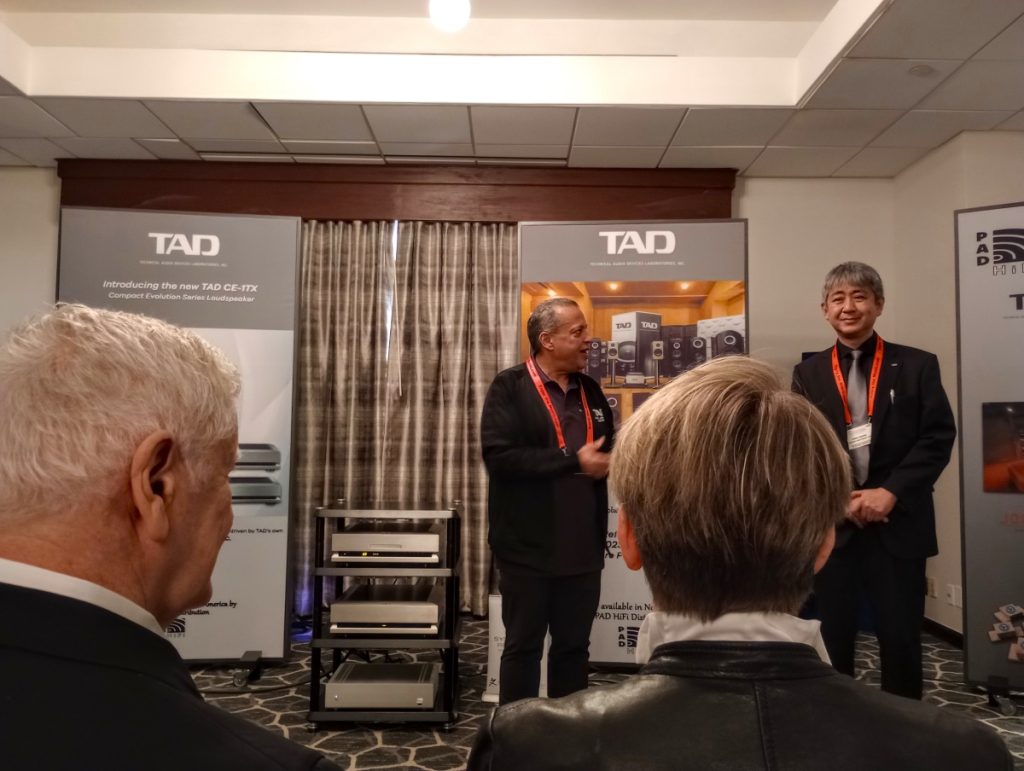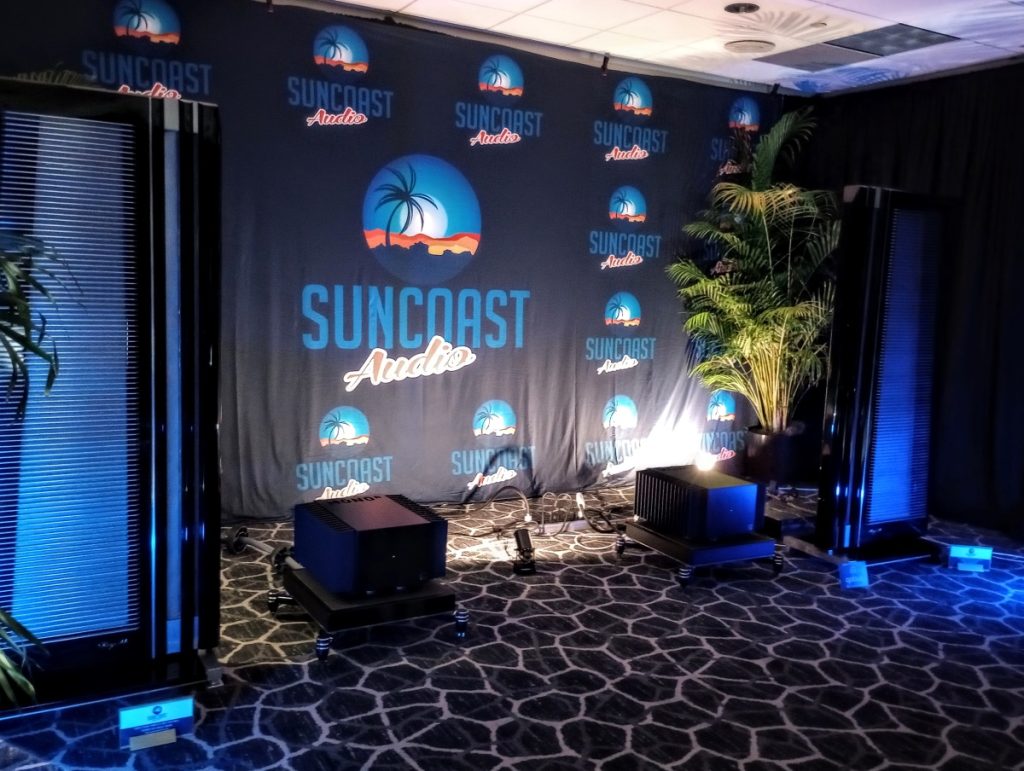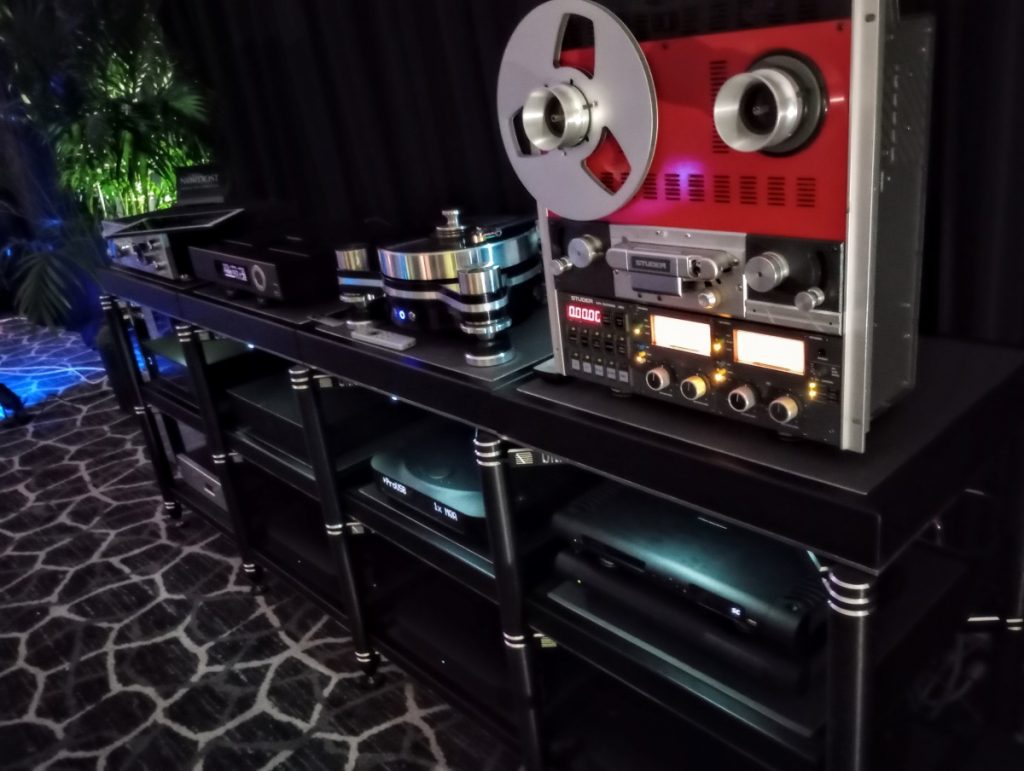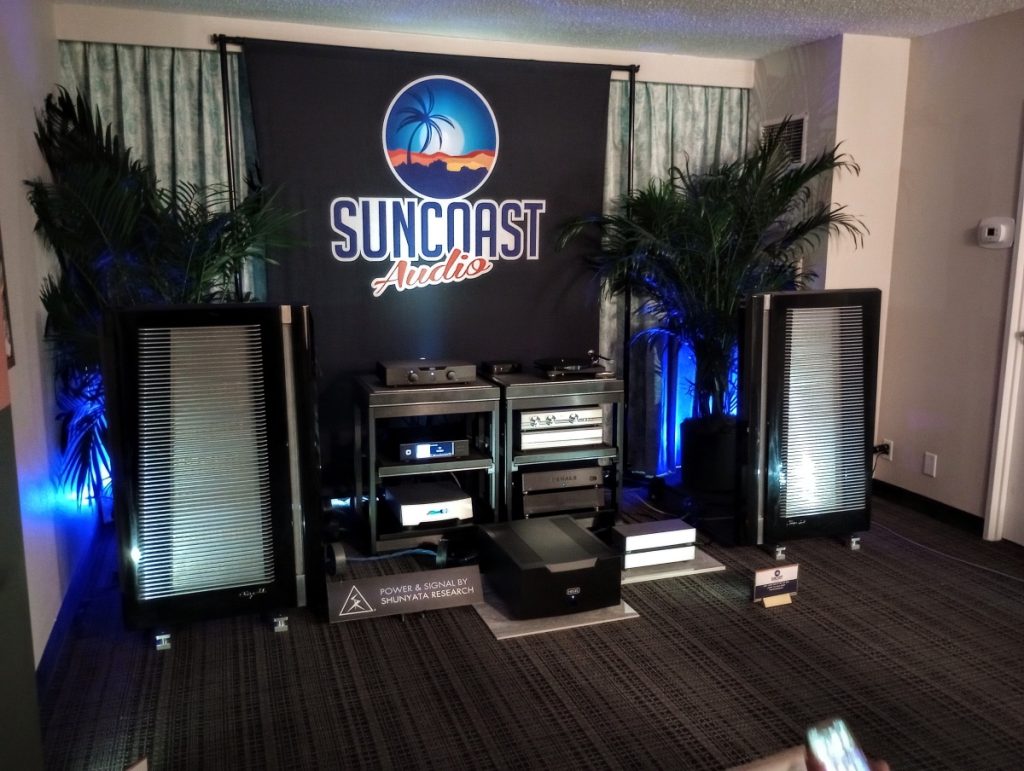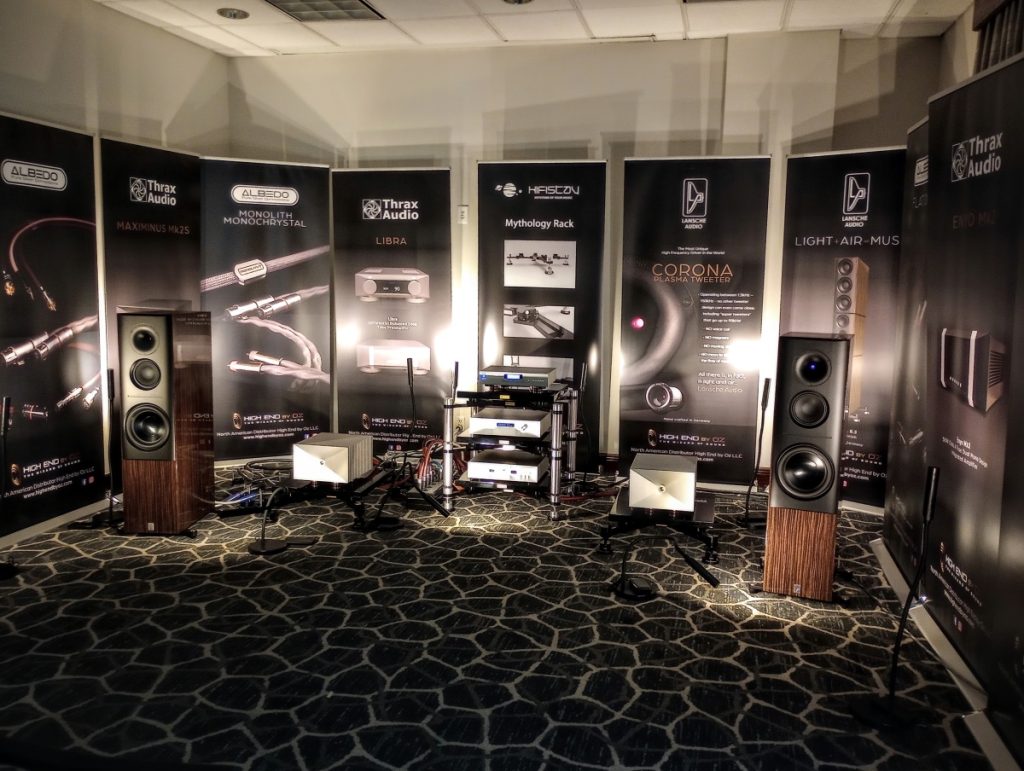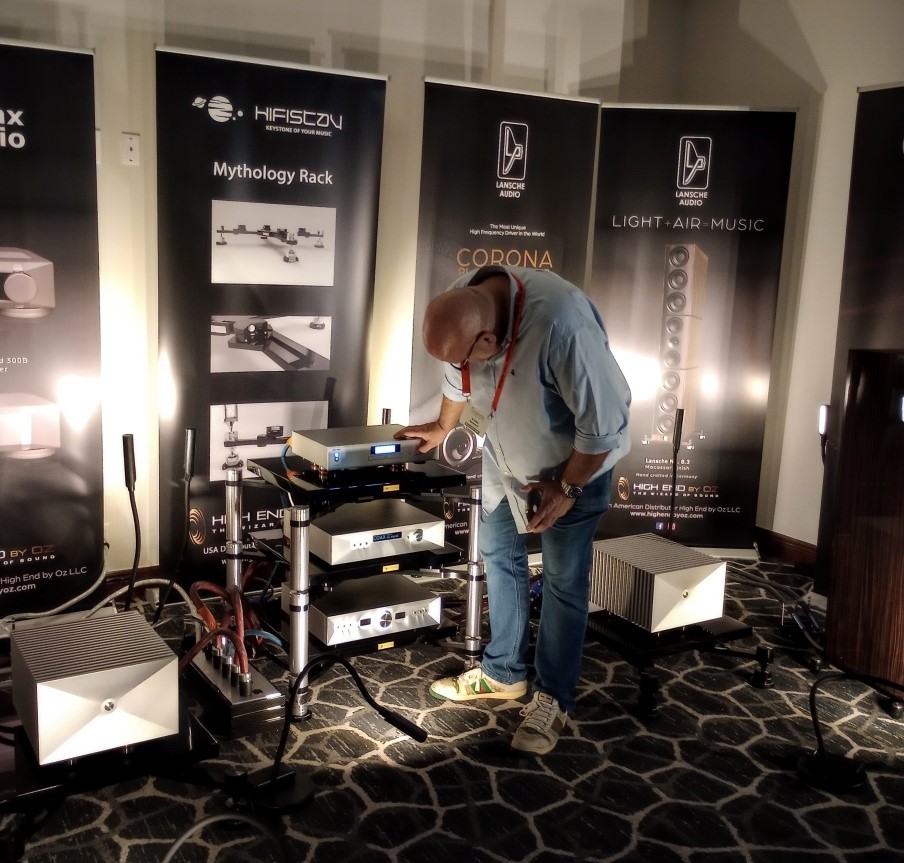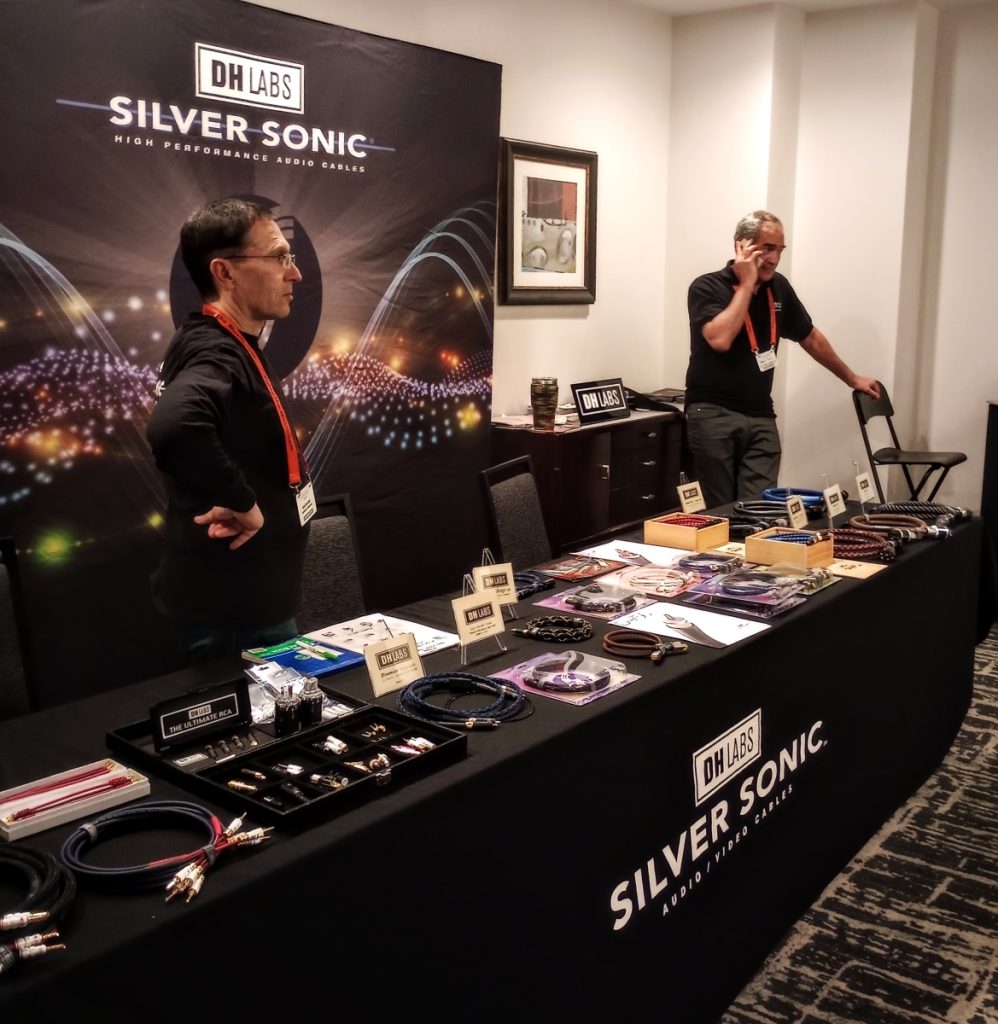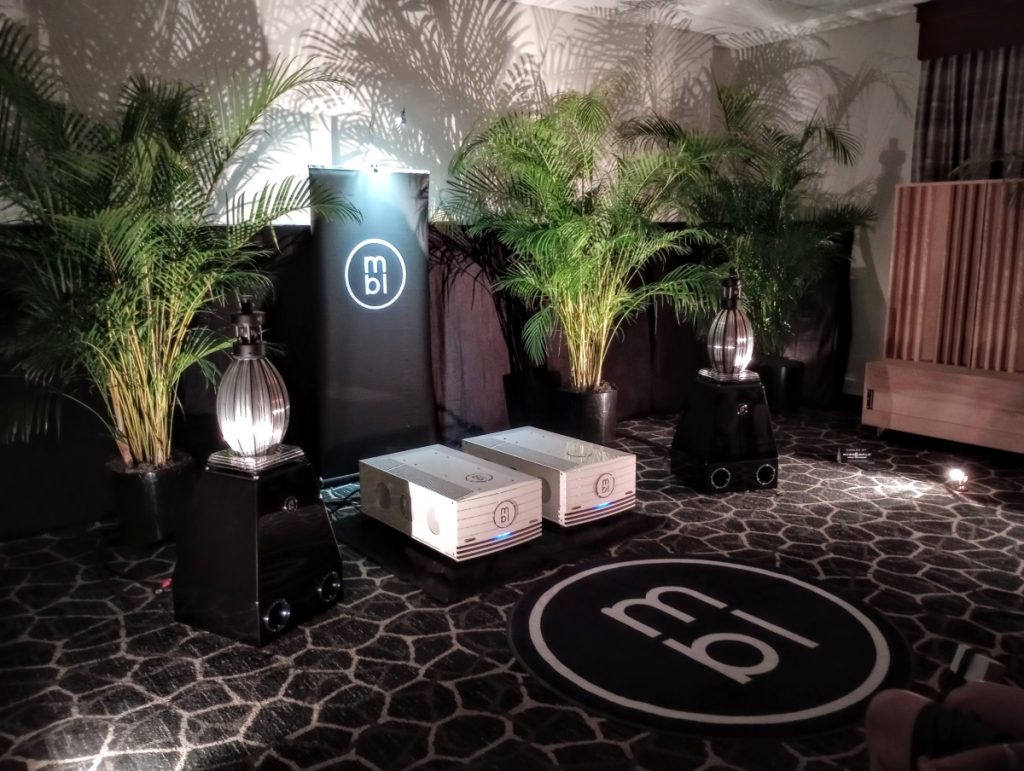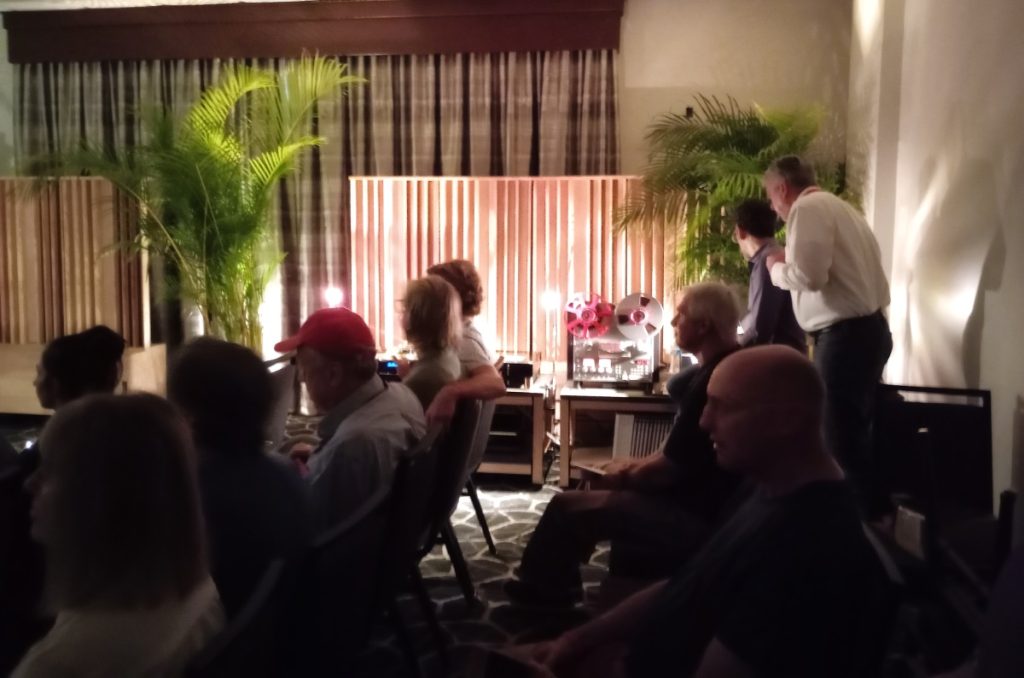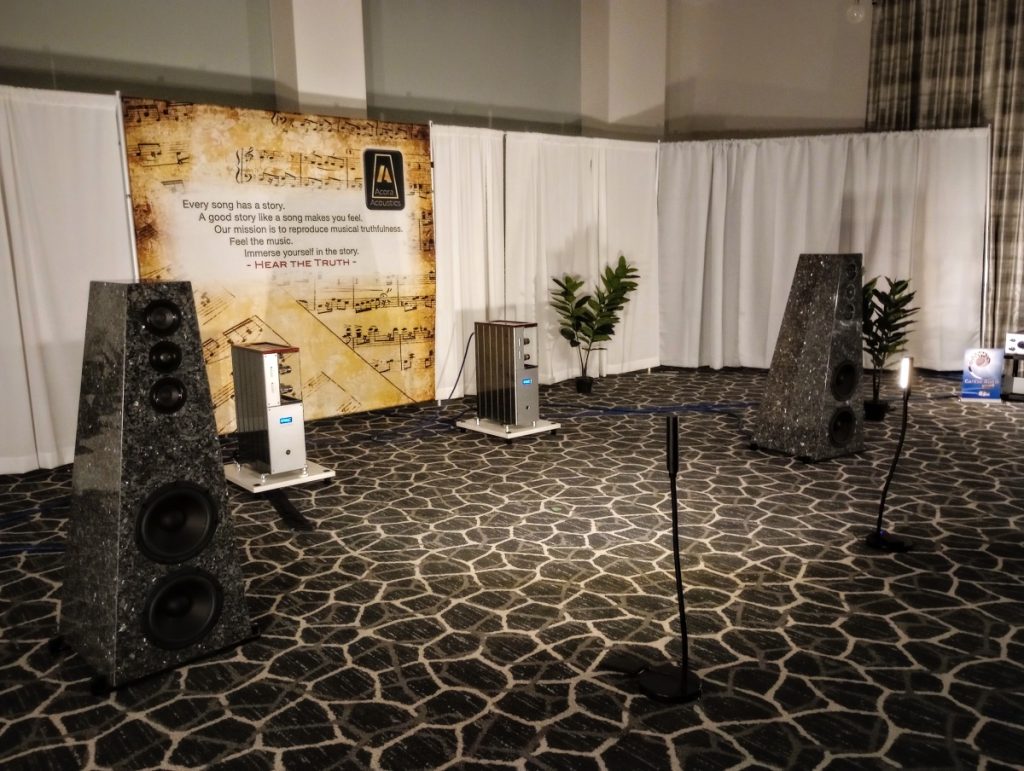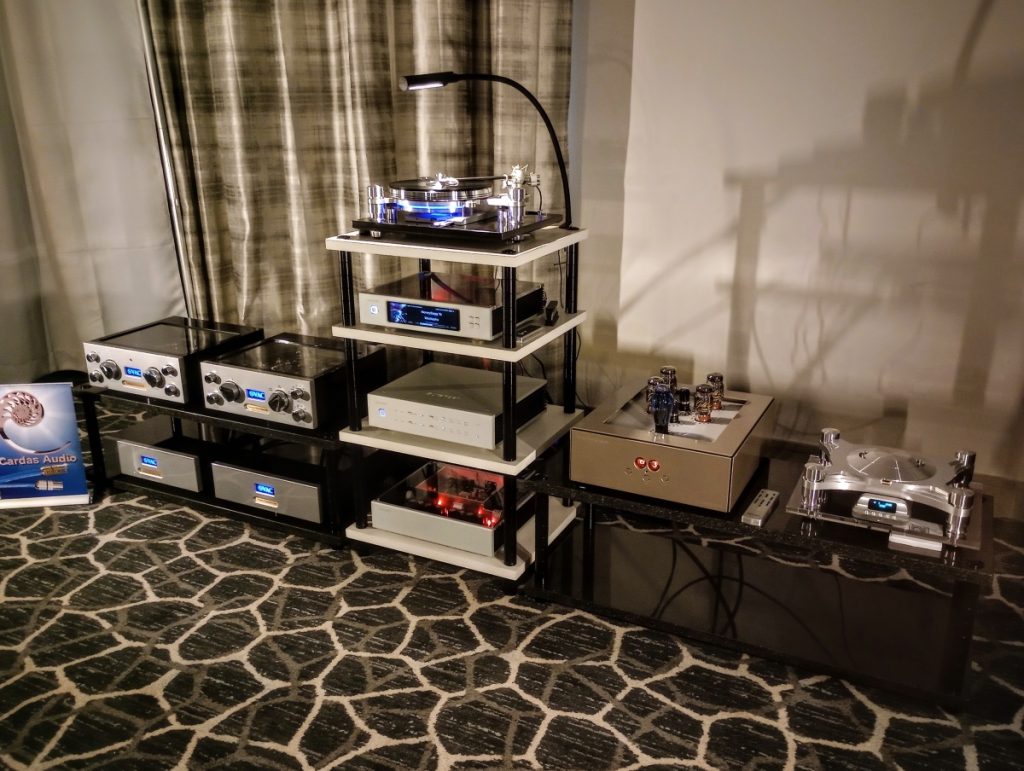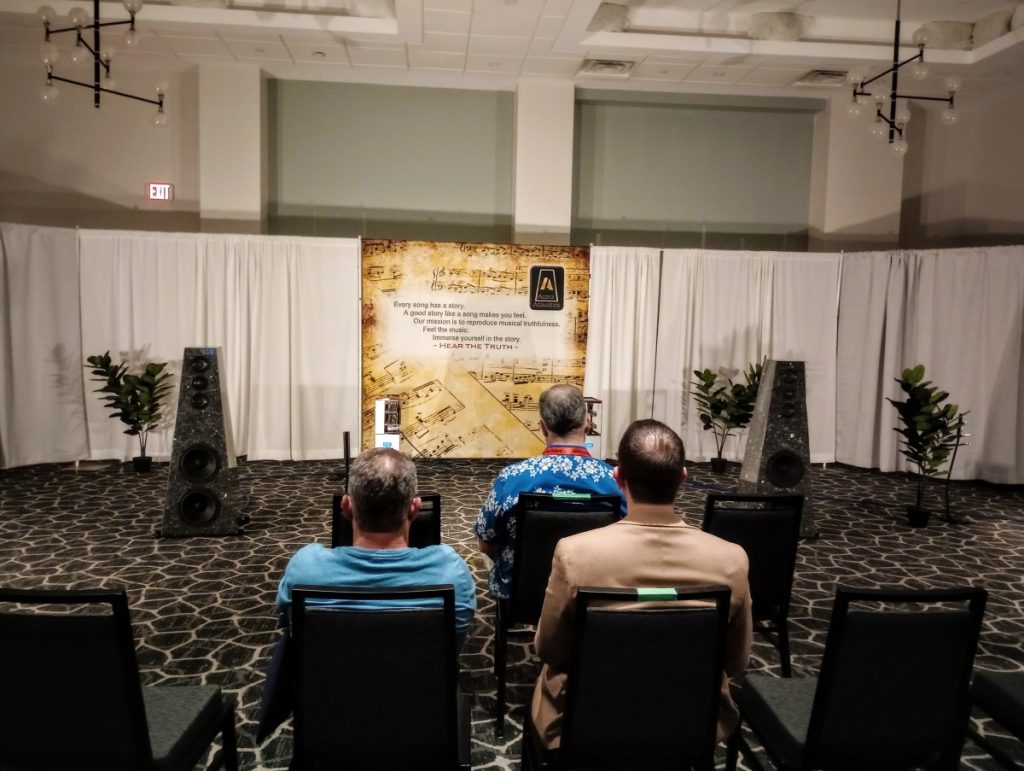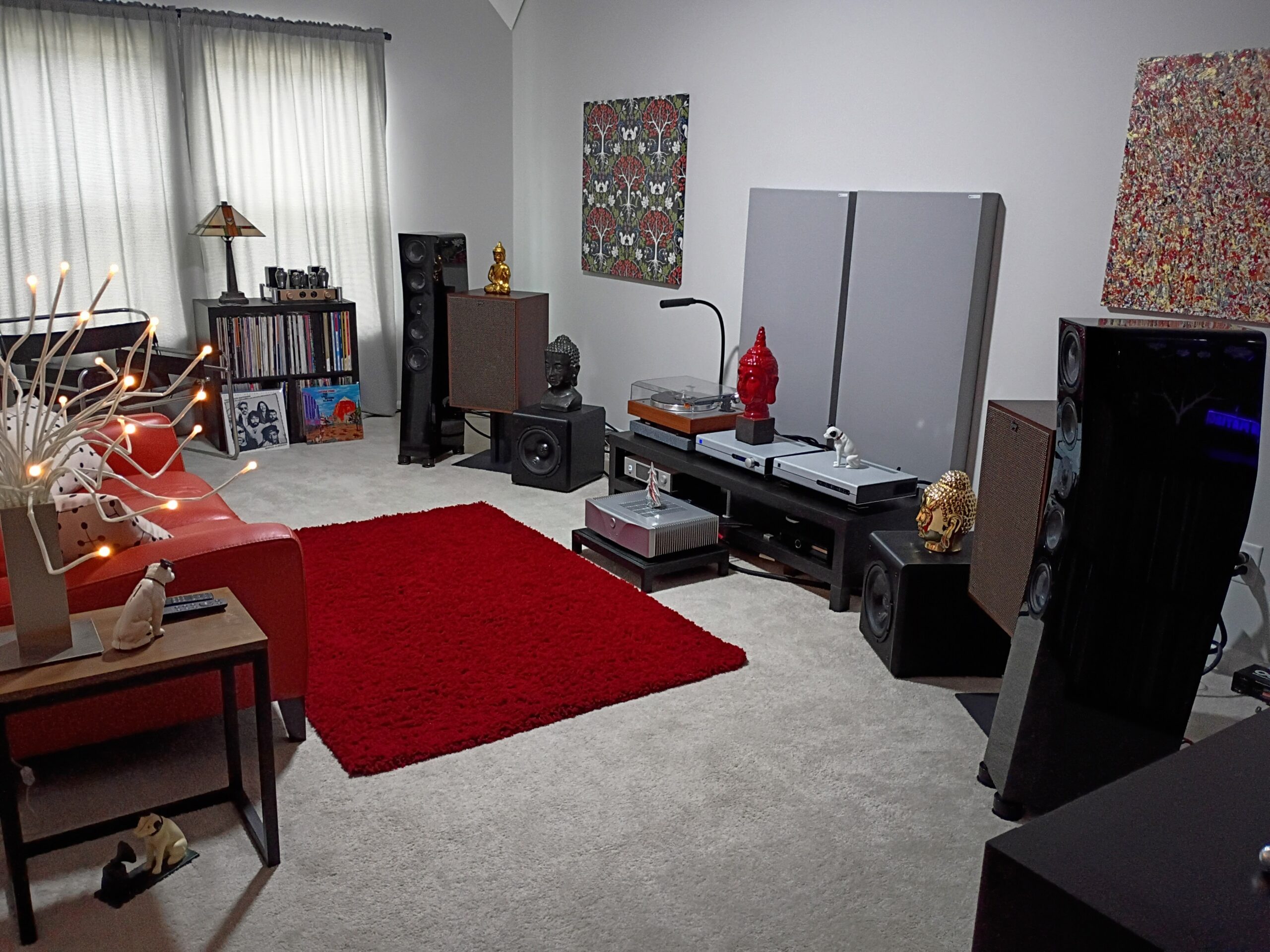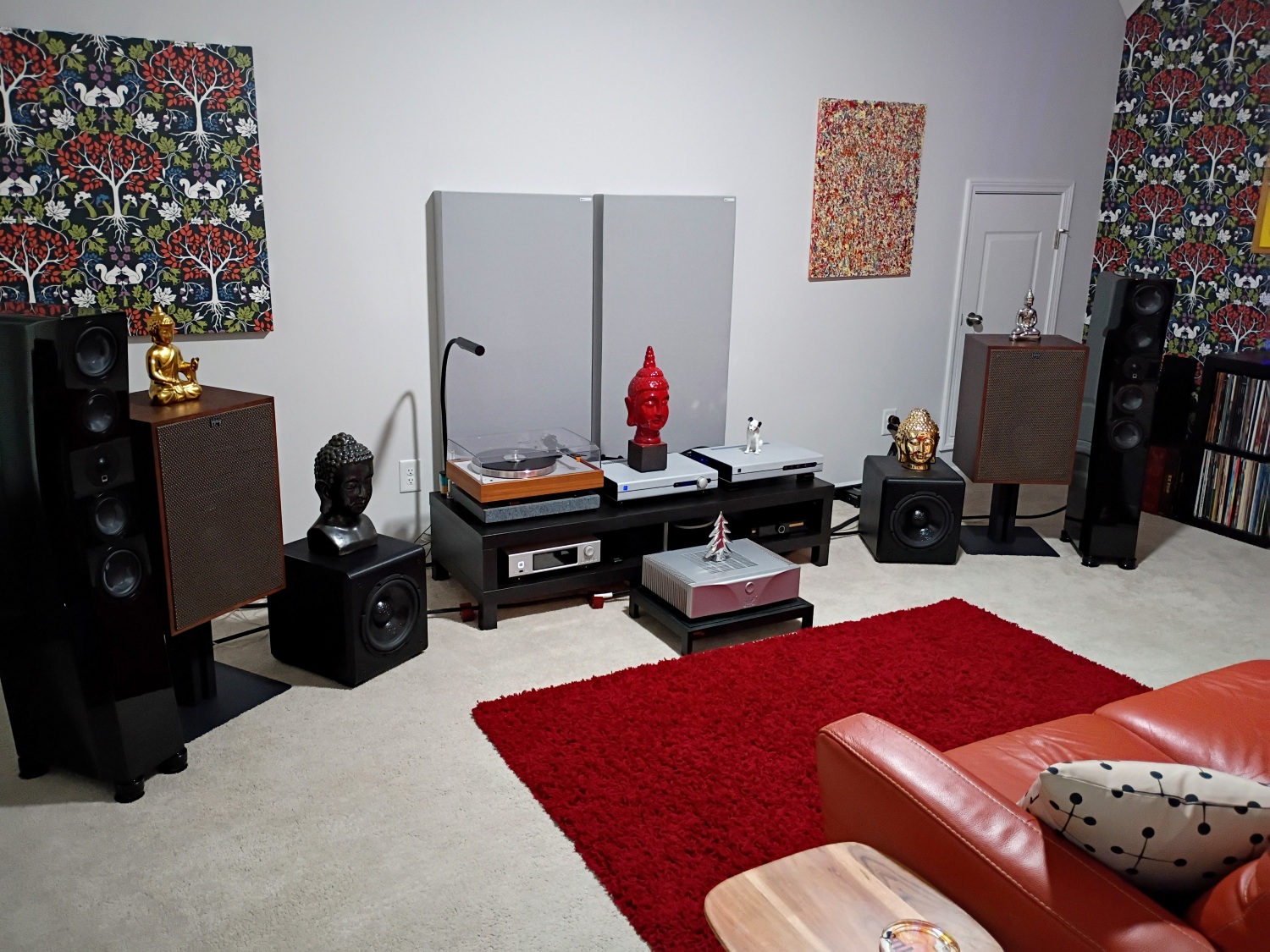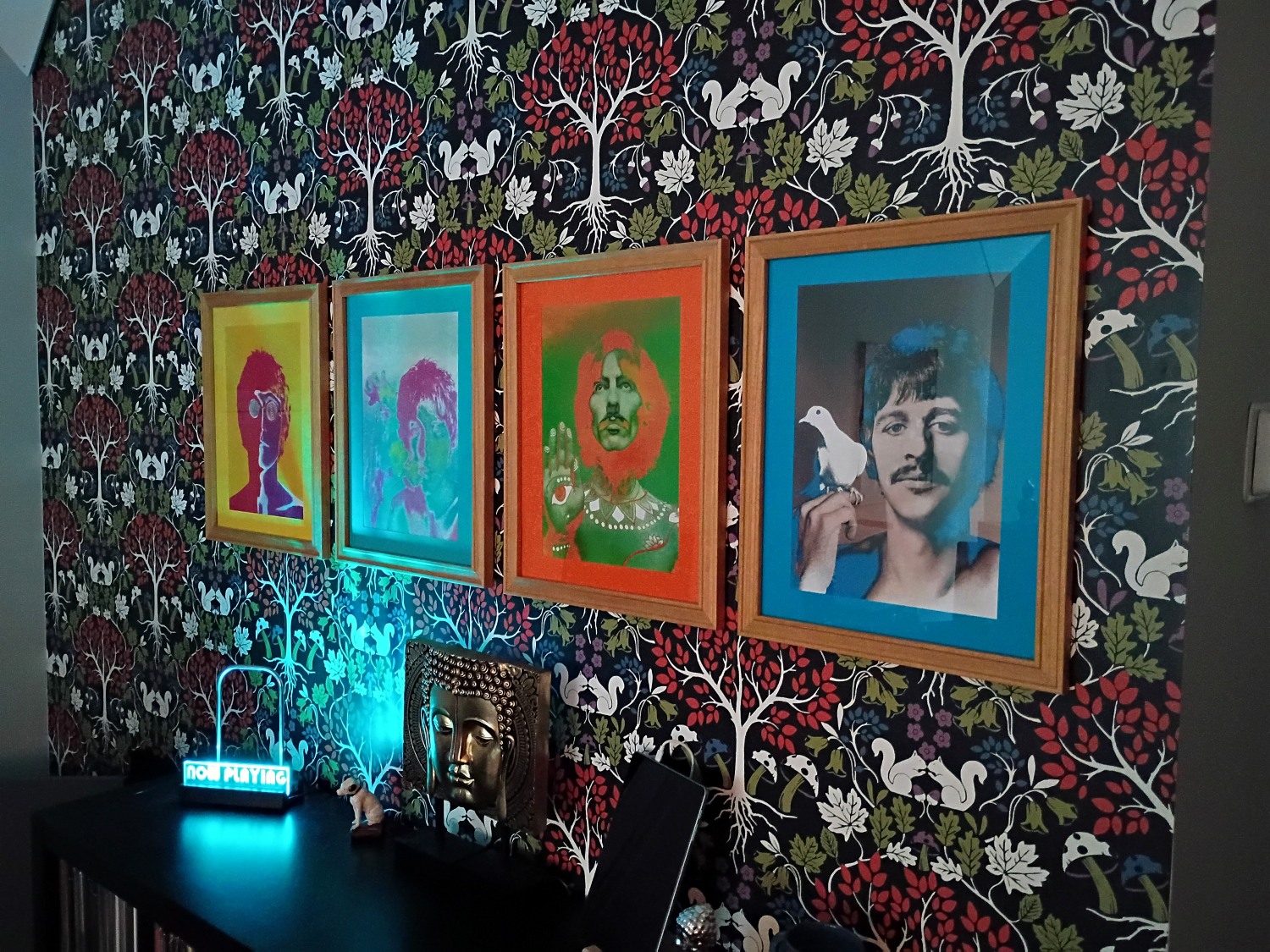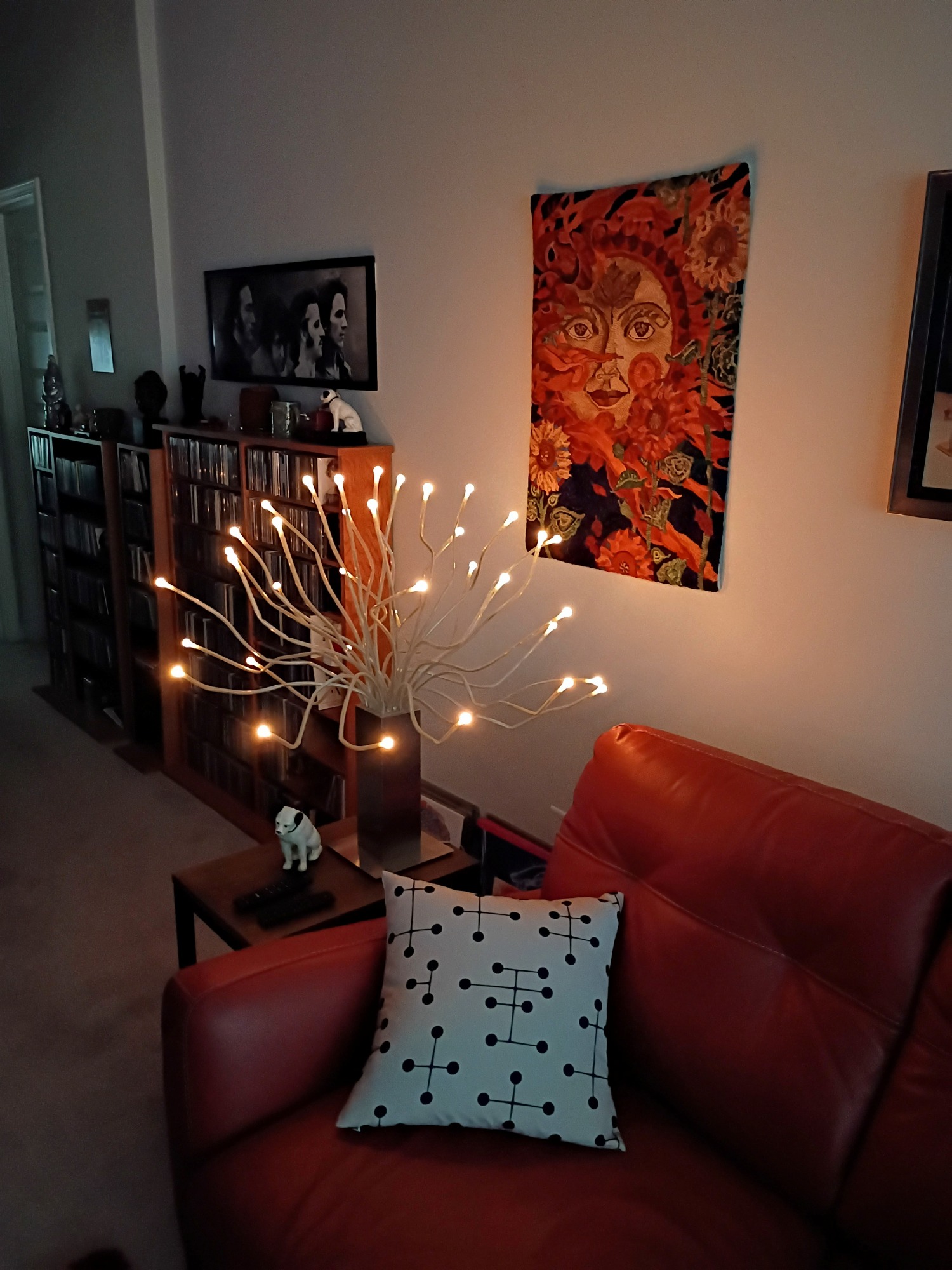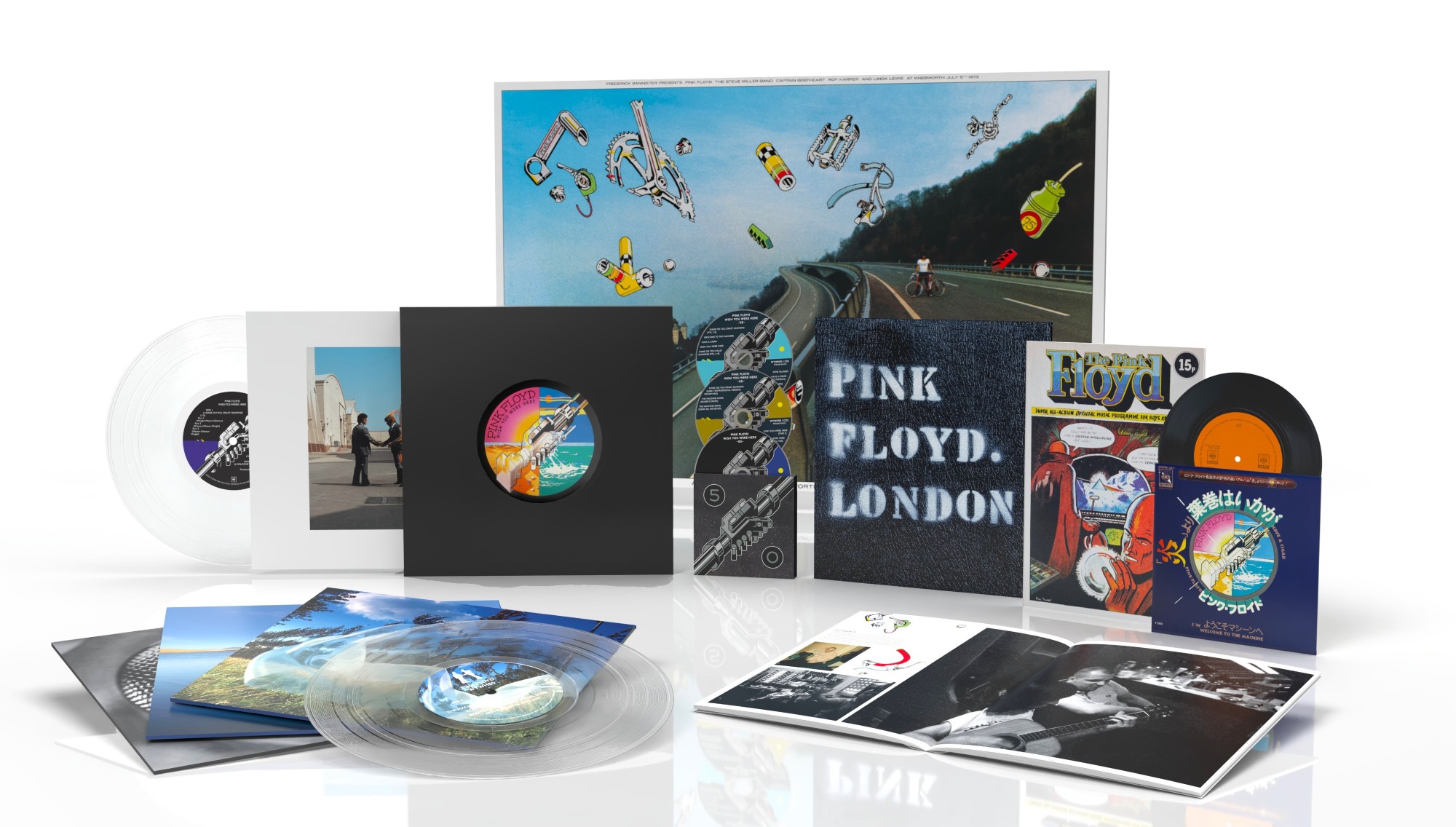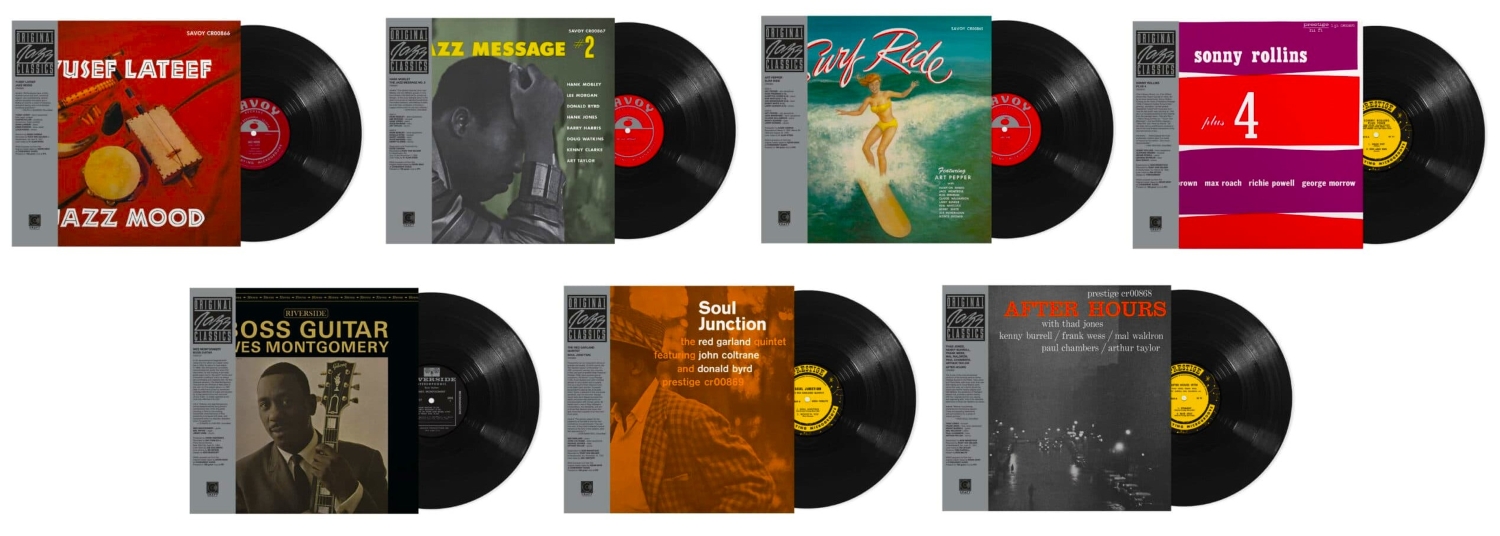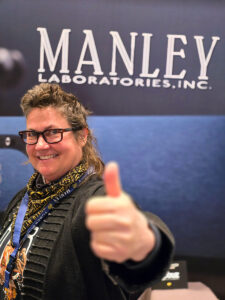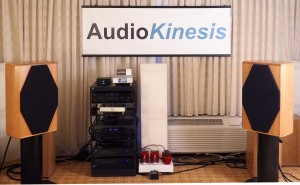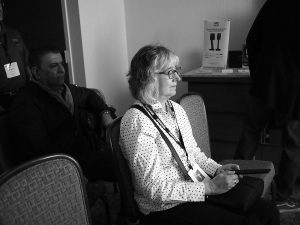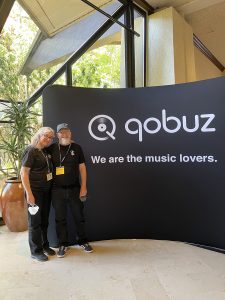2023 marked my third consecutive trip to the Florida Audio Expo (or FLAX as it seems to have been shortened to), and the experience was hands down the best yet! In terms of vendors, the show was completely sold out, which is great, but also a mixed blessing of sorts. There was so much more to see, but also so very much to attempt to pack into a relatively short weekend (not that I'm complaining, it's a good problem to have!) And unlike last year, there wasn't anywhere near the level of "musical chairs" being played between the printed show guide information and the actual room any particular exhibitor occupied. Making it fairly effortless to locate the rooms I in fact wanted (or needed) to see. And there was a really good turnout of showgoers—the hallways and elevators were really packed both Friday and Saturday, if perhaps a bit less so on Sunday. Regardless, I felt the show was a smashing success!
Synergistic Research and Von Schweikert Audio in conjunction with Scott Walker Audio
While I know a ton of folks who incorporate Ted Denney's products into their systems, it just hasn't worked out that I'm among them—at least, not yet! Regardless, at FLAX, my hotel room was two doors down from the Synergistic Research (SR) room, so it was logically the first room I visited on Friday morning. And it didn't hurt that Synergistic Research's enhancement products and cable offerings were being displayed in combination with loudspeakers from Von Schweikert Audio, presented by their dealer, Scott Walker Audio. All power and preamplification was supplied in a very nice Master series setup from Valve Amplification Company (VAC). The analog source was a VPI turntable equipped with a Lyra cartridge; for digital sources, Berkeley Audio Design provided their flagship Alpha DAC Reference Series 3 (Berkeley is also rep'd by Scott Walker Audio). The server/streamer was a still-under-development device not yet released by Synergistic Research. In a departure from recent years, Von Schweikert took a bit of a lower profile in a smaller-than-usual room, choosing to feature the excellent Endeavor SE loudspeakers in an eye-catching, high-gloss red finish. Those speakers almost single-handedly stole the show last year from the larger, much more expensive Ultra 7—you can read about my impressions of last year's VSA show experience HERE.
The Endeavor SE were set up in almost near-field position in the much smaller room when compared to the cavernous Bayshore ballroom from previous FLAX/VSA experiences. That said, they produced a moving and impactful presentation with the excellent digital source material from SR and Berkeley. And having that megabuck VAC Master equipment providing the muscle and finesse definitely helped confirm my previous impressions—the Endeavor SE can go toe-to-toe with just about anything out there and not be embarrassed, not in the least! I visited the room several times, but never got the opportunity to hear the VPI table, so all my impressions were strictly from the Berkeley DAC and Synergistic Research equipment—and that was pretty darn great! As I sat in the room, I began to notice that there were very small "dots" that were positioned at strategic points on the top, face, and sides of the loudspeakers, and even at locations on the room walls and ceiling. I asked Andy Wiederspahn of SR about the dots; they were various incarnations of their HFT (High Frequency Transducer) technology, and with correct room placement are designed to make the loudspeakers simply "disappear" in the room. I have no personal experience with the HFT, but I have to admit, I really felt the Endeavor SE did indeed seem to disappear, getting totally out of the way of the music!
TAD Laboratories with Jim Anderson and Ulrike Schwarz
TAD (Technical Audio Devices) Labs is a Japanese company that's orchestrating a push back into the US audio markets, and did so in a big way at FLAX this year. Not the least by exhibiting in the hotel's big Bayshore ballroom, and it didn't hurt that they also invited industry icons Jim Anderson and Ulrike Schwarz to discuss their involvement with recording jazz artist Patricia Barber. The duo spun a carefully selected group of tracks from Barber's numerous albums at multiple events over the weekend, and on two very different room systems comprised entirely of TAD electronics and loudspeakers. You can read my full coverage of TAD's room HERE, and hey, none other than Andrew Jones designed TAD's big Reference One loudspeakers, so you know the sound was crazy good!
Suncoast Audio in the large Florida room and elsewhere
Retailer/distributor Suncoast Audio was located in two rooms again this year, and featured loudspeakers from Clarisys Audio. The highlight in the large Florida room featured the US debut of the massive Clarisys Auditorium loudspeakers; power and preamplification was provided by Block Audio. The analog front end consisted of a VPI turntable and a Studer open reel deck was also present; digital sources were handled by MSB Technology and Taiko Audio. Cables were by Nordost and all equipment stands and racks were from Critical Mass Systems. I was there basically fulfilling a request from another Positive Feedback writer, who had asked me to please stop by and check the room out. Prior to walking in, I had zero exposure to Clarisys loudspeakers.
The Critical Mass System racks provide substantial support for a wide range of gear.
Upon entering the room, I was struck by a certain level of deja vu; the Clarisys loudspeakers look nothing, if not very much, like an updated pair of Apogees from way back when! I was talking with Suncoast's Michael Bovaird when Clarisys designer Florian Wiegand walked into the room and gave me the rundown on his design—which he jokingly said he "shamelessly stole" from Apogee. And then re-engineered with better components and materials to create Clarisys' distinctive sonic signature. Having heard Apogees in the past, I had to agree that the Clarisys loudspeakers had all the "openness of sound" of Apogees, without any of the harshness that I had previously attributed to them back in the day. It goes without saying that the excellent amplification from Block and digital source material from Taiko and MSB contributed to the exceptional overall sound of the room.
The Clarisys Minuet loudspeakers were great, but the Shunyata Altaira chassis grounding demo almost caused an uproar!
Upstairs on the 9th floor, Suncoast's second room also featured Clarisys loudspeakers, the smaller Minuet, with amplification from Hegel. The analog source was a Rega turntable, and the digital playback was provided by equipment from MSB, Aurrender, and Lumin. Cables, power conditioning, and the Altaira chassis ground system were provided by Shunyata. The smaller Clarisys Minuet retained much of the same musical character as their larger siblings downstairs, but most of the hubbub on the 9th floor revolved around the Shunyata Altaira chassis ground demonstration. I caught this demo last year, and it was nothing short of astonishing. Shunyata has made significant improvements to the Altaira in the time since then. The room was always packed, and it was simply amazing how many vocal outbursts came from guys in the room who left shaking their heads—it's an astonishing device to say the least!
High End By Oz, featuring Thrax, Lansche Audio, Albedo Silver, and Hifistay
High End By Oz is the distributor for a number of exotic brands, and visiting "Oz" Turan's room is always one of the highlights of any audio show visit. When I first saw the Thrax brand at Axpona a while back, I was simply blown away by the massive tubes used in their amplifiers, but even more so by the impressive sound. Located this year at FLAX in the large Kennedy room, his product offering was centered around German manufacturer Lansche Audio's No.5.2 loudspeaker, which features their proprietary Corona Ion plasma tweeter. Amplification and all other electronics were provided by Thrax, who manufacture all aspects of their componentry in Bulgaria (that also includes loudspeakers, DACs, and turntables). Cables were provided by Albedo Silver and racks were provided by Hifistay.
"Oz" Turan loads a disc for another demo on the Lansche No.5.2 loudspeakers.
The plasma tweeter is what makes the Lansche No.5.2 so very special, and the hybrid tube mono Thrax amplifiers were perfectly mated to them. The 5.2's plasma ion tweeter is crossed over around 2.5kHz, so it's reproducing a lot of midrange information as well. The idea being that with no mechanical moving parts, the tweeter should show an improved degree of transparency throughout its frequency range. The sound of everything Oz played during my visit displayed a delicacy and clarity that definitely seemed to support those conclusions—this is definitely a technology I'd like to hear more of!
DH Labs Silver Sonic Cables
Greg Hovsepian and DH Labs were once again present in the hallway on the main floor with the heavy hitters, showing off their excellent line of exactingly well-made cables. Really nice guys, and it's always a pleasure to stop by and talk shop with them. And apparently, they also OEM for certain manufacturers; I currently have a review underway where that appears to be the case—more to come soon here in Positive Feedback!
MBL with United Home Audio and Wireworld Cables
The MBL room is one that typically hasn't always been my particular poison in years past, but David Solomon of Qobuz insisted that the MBL 101E Mk II that were featured this year were a must-hear, so I decided to take another listen! The large Tampa Terrace room featured the typical all-MBL complement of associated electronics, along with the 101E Mk II—which sit in the middle of MBL's loudspeaker lineup. The room also featured an open reel deck from United Home Audio, an ultra high-end dealer in the Virginia/Maryland/DC area that also happens to carry the MBL full product line. All cables in the room were Wireworld Eclipse 8.
The crowded MBL room seemed greatly appreciative of the excellent sound.
United Home Audio, in addition to rep'ing a relatively vast array of high-end goods, also sell their own line of open reel decks—they're pretty much the industry standard nowadays. That happened to be the source playing when I visited the MBL room—which was packed, by the way! Many audiophiles worship open reel above every other music source available, as a tape is probably about as close as you'll ever get to the original master.
So how did they sound? I've always loved the 360 degree radiating pattern of MBL loudspeakers; they tend to cast a huge soundstage, with a pretty astonishing stereo image. And I've always found them to be a little harsh at the top, but that simply wasn't the case this year; the 101E Mk II's displayed a warm and (shockingly!) almost liquid top-end that wasn't at all as etched or fatiguing as I'd found in my previous exposure to the brand. I didn't think I could ever live with MBL loudspeakers, despite their many positives, I didn't think I could overcome what I considered the glaring (literally!) negatives. This year's visit to FLAX has me definitely rethinking that!
Acora Acoustics with VAC and Cardas in the big Westshore ballroom
Acora Acoustics this year occupied the big Westshore ballroom; they shared the room with Valve Amplification Company (VAC), whose lineup featured their massive, kilobuck Statement line of amplifiers, Statement preamplifier and phono preamp, and associated electronics. All cabling was supplied by Cardas. The analog source was an Oracle Delphi Reference table that was fitted with a Reed 1H tonearm and a Lyra Atlas cartridge. The digital source setup featured an Oracle CD transport, streaming from Aurender, and a Lampizator DAC. I only was able to experience playback from the digital source during my multiple trips to the room.
The Acora VRC-1 were fed by sources from Oracle, Lyra, Lampizator, and Aurender.
Acora's FLAX showing in the big room featured a pre-release preview of their soon-to-be released flagship loudspeaker, the VRC-1. At over 400 lbs. each, these guys are literally behemoths—and that's probably an understatement if there ever was one! Prospective purchasers probably need to consider whether they have (or might need!) concrete slab floors to support these granite cabinet monsters. I'm not kidding—moving each one of these guys is probably something akin to moving a piano!
The Westshore ballroom is massive, but the Acora VRC-1 had no problems energizing the room!
When I walked into the room on the first day, apparently they'd just finished playback of a track where someone in the room measured peak SPLs in excess of 120dB(!)—no, I'm not joking! A guy sitting in the front row just kept shaking his head, saying "Stupid good! Stooooopid good!" As I got seated, a couple of orchestral pieces roared out of the VRC-1, and the massive scale and ultra-realism of the sound also had me shaking my head. That was followed by some electronica, which quite stunningly bounced about the room. And don't get me wrong, it's not just that the Acora VRC-1 could play loudly, they also offered a very balanced and supremely musical presentation. I was talking to a guy in the room who wanted to know what I thought about the granite cabinets—I told him that I was conflicted—granite cabinets? He replied, "But they're so rigid!" Rigid, yes, but I just never in a million years would have thought that natural stone would provide a good substrate for building a high-end loudspeaker. Oh, well! Stooooopid good? Absolutely!
Stay tuned for additional room coverage!
All photos by the author




